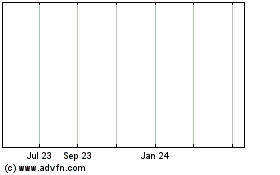By Tripp Mickle and Timothy W. Martin
Prepare for smartphone sticker shock.
A decade into the smartphone era, Apple Inc. and Samsung
Electronics Co. are betting they can increase sales by jacking up
the price of their flagship products -- bucking the usual downward
arc for prices of consumer electronics in the years after
introduction.
Apple on Tuesday is expected to unveil a more-advanced iPhone --
also known as the anniversary iPhone, the iPhone 8 or iPhone X --
which analysts predict will carry a starting retail price of about
$1,000. That would be about 50% more than the cheapest version of
the iPhone 7 Apple introduced last year at $649, and about 30% more
than the larger iPhone 7 Plus, at $769. (On Tuesday, Apple also is
expected to show off updated versions of those phones with prices
similar to last year's models.)
Apple's new iPhone debut follows Samsung's launch last month of
its new high-end phone, the Galaxy Note 8, which hits shelves Sept.
15 starting at around $950.
Prices approaching $1,000 are more often associated with durable
kitchen appliances than with pocket-size devices people tend to
replace every few years. Yet Apple and Samsung think they will be
able to sell tens of millions of smartphones at the higher price
points, in part because of how vital the devices have become. Many
users are willing to pay a premium for a handset that functions as
not only a mobile phone, but also a personal computer, a video
player, a gaming device, a GPS system, a music player, a reader, a
flashlight and a wallet.
U.S. consumers now spend more than three hours a day on average
on their mobile devices, according to research firm eMarketer.
Patrick Moorhead, president of Moor Insights & Strategy, said
people are postponing upgrades to their other gadgets so they have
more to spend on their smartphones.
"The utility value of these products is so, so high," said
Horace Dediu, an industry analyst at Asymco and a former Nokia
Corp. business development executive.
The companies believe their prices are justified to pay for
innovations such as longer battery life, larger displays and voice
assistants. Apple's newest iPhone is expected to have components
that cost about 80% more than the components in the iPhone 7,
including an edge-to-edge, organic light-emitting diode, or OLED,
display, wireless charging and new sensors, according to brokerage
firm Susquehanna International Group.
If consumers take the new price points in stride, Apple and
Samsung could widen their advantage over hundreds of smartphone
rivals, many struggling to break even. Apple and Samsung claim
nearly all the industry's combined annual profits, with about 79%
for Apple and 15% for Samsung, according to market researcher
Strategy Analytics.
The two are defying the gravity that usually pulls consumer
prices downward as innovation wanes and manufacturing costs fall.
For example, average prices for TVs and laptops have fallen about
50% from their respective peaks over the past 15 years, to $467 for
TVs and $598 for laptops, according to trade group Consumer
Technology Association. Average smartphone prices have fallen 32%
to $303 in the decade since the iPhone's introduction.
The average iPhone selling price rose about 2.5% to $645 in
Apple's fiscal 2016, up from $629 in fiscal 2009. Last year's
pricier iPhone 7 Plus with a dual-lens camera outsold its
predecessor, the iPhone 6s Plus -- a sign consumers are willing to
pay up for performance.
Samsung had to pull the Galaxy Note 7 from shelves last year due
to overheating batteries, but the Galaxy S7 model went on to become
its top-selling phone ever. Unlike Apple, Samsung, the world's
largest phone maker by shipments, also sells hundreds of millions
of lower-cost handsets, such as the "Z series" in India, which
retails for around $90.
New features on Samsung's Galaxy Note 8 include a dual-lens
camera and a mammoth 6.3-inch OLED screen. The Note 8's component
costs rose about 20% over the prior year, according to an estimate
by IHS Markit, a market researcher.
Many consumers are balking at a $1,000 handset. A recent survey
of wireless consumers by Barclay's found only 11% of respondents
would spend more than $1,000 on a smartphone, with respondents on
average saying they would spend only about $580.
Apple and Samsung have financing plans that can obscure the full
cost of new phones. Apple's upgrade program last year offered the
iPhone 7 for $32 a month over 24 months -- about $120 more than the
retail price but with an extended warranty and the option for an
upgrade after a year. Samsung offers a similar, no-interest
financing plan.
Wireless carriers, which have largely eliminated phone subsidies
in recent years, also offer monthly payment plans
Rivals say the steep price tags could spell opportunity. Juno
Cho, head of LG Electronics Inc.'s mobile division, the No. 3
player in the U.S., believes there will be a "sizable number" of
consumers who find the pricing of certain premium handsets to be
"simply out of reach." He hopes to grab part of Apple and Samsung's
combined 60% U.S. market share with lower-priced, feature-rich
phones.
Winning over loyal Apple consumers won't be easy, says Don Scott
Carpenter, a 47-year-old executive at a nonprofit organization and
an Apple die-hard. He upgrades to the newest iPhone every year and
said his $179 AT&T bill is still less than he pays a month for
cable, TV and internet.
"I won't flinch," he said of higher prices. The phone is "part
of life. You keep it with you 22 hours a day."
Ryan Knutson contributed to this article.
Write to Tripp Mickle at Tripp.Mickle@wsj.com and Timothy W.
Martin at timothy.martin@wsj.com
(END) Dow Jones Newswires
September 10, 2017 07:14 ET (11:14 GMT)
Copyright (c) 2017 Dow Jones & Company, Inc.
Samsung Electronics (PK) (USOTC:SSNHZ)
Historical Stock Chart
From Mar 2024 to Apr 2024

Samsung Electronics (PK) (USOTC:SSNHZ)
Historical Stock Chart
From Apr 2023 to Apr 2024
